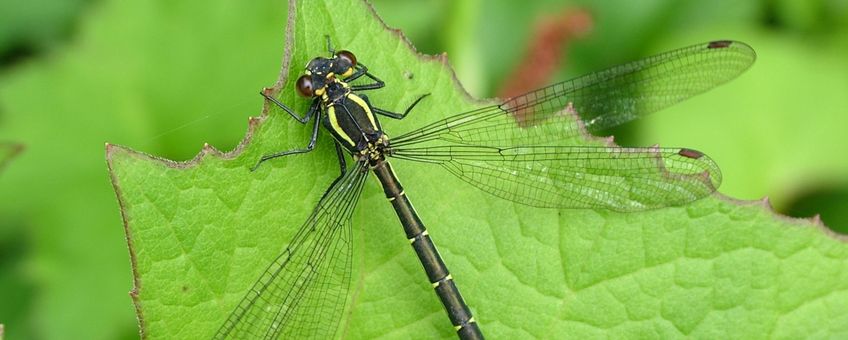
New families for old dragonflies
Naturalis Biodiversity CenterPhylogeny reveals the degree of relatedness between different animal and plant species. Such an evolutionary tree can help to understand the biodiversity on earth. For example, it can help scientists to investigate how certain species have spread across the world or how certain characteristics have arisen during the course of evolution. Until the start of this century phylogenies were mainly produced based on morphological characteristics, but nowadays, it is mainly done by analysing the DNA of the species. Therefore, modern phylogenies have often become far more reliable.

For the article published this week in Molecular Phylogenetics and Evolution, DNA material from several hundreds of genes was used from almost all family-groups of dragonflies (including the closely related damselflies). The results confirmed what the scientists had already suspected for a long time: some groups simply have no close relatives and therefore do not belong in one of the 39 existing dragonfly families. Five new families have now been created to accommodate these groups.
Vulnerable rainforest streams
The new families are all very small and range from just one to eight species in size. They are found in areas with a particularly high and unique biodiversity. One family is only found in Madagascar, one in Tanzania, one in Colombia and two are limited to the border region of China with Vietnam, Laos and Thailand. It often concerns species that only a few people have seen in the wild. For some species, even the larvae have not yet been described. All of the species seem to be limited to vulnerable rainforest streams, mostly in mountainous areas.

Although these new families represent just a few species, they were possibly far more species rich millions of years ago. The decrease of these groups in the past millions of years was a natural process, but their extinction during our lifetime is not. For example, Madagascar’s mountain streams where the eight species of Protolestidae are found are already threatened by forest degradation. The most threatened species is Amanipodagrion gilliesi, the only representative of the family Amanipodagrionidae. This species is only known from a single stream, right at the edge of a forest reserve in the Usambara Mountains in East Tanzania. If this species becomes extinct, a million years old evolutionary lineage will permanently disappear from the earth.
More information
Text: Vincent Kalkman and Klaas-Douwe Dijkstra, Naturalis Biodiversity Center
Photos: Vincent Kalkman, Naturalis Biodiversity Center (lead photo: the damselfly Mesopodagrion tibetanum is only found in the mountains of Southeast Asia and is one of only two species of the family Mesopodagrionidae); Viola Clausnitzer, IUCN Dragonfly Specialist Group
